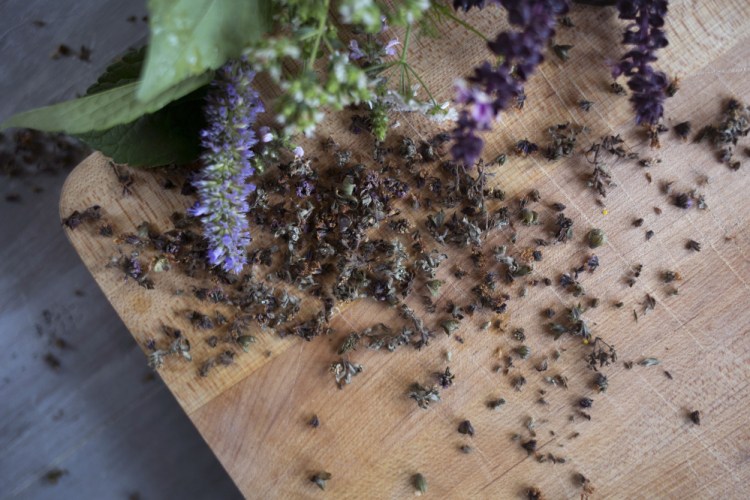Chef, slow food advocate and food writer Deborah Madison waxes poetic in the opening chapter of her “Vegetable Literacy” cookbook about the beautiful flowers a home gardener can enjoy as she looks over her patch of kitchen vegetables and passel of herbs at the season’s end.
In due time, these flowers are all well and good. They signal the point in the plants’ growth cycle when they are ready to produce seeds and ensure future generations of their species. But the abnormally warm and dry weather we are experiencing has many an herb in our area bolting early, leaving cooks and gardeners seemingly unable to experience their flavor for much longer.
No worries, folks. You can still enjoy your bolting herbs. According to Massachusetts-based herbalist Betsy Williams, backyard gardeners can pinch off the flowers from perennial herbs like chives, marjoram, mint, oregano, sage, tarragon and thyme; cut the plants back a bit; and give them a good watering. With that care, they will keep growing.
For annual herbs like basil, cilantro/coriander, dill and fennel, their one and only botanical job is to bear seeds; bolting signals the end of their growth cycle, so you need to use them before you lose them to seed (which really isn’t a loss, anyway, but a head start on next year’s garden if you save them).
Chef Ben Hasty of Thistle Pig in South Berwick uses bolted herbs to make flavored oils for marinating meat and mushrooms. And if the bolted herbs have made it to the seed production part of their life cycle, he uses them fresh to garnish plates of crudo (carefully prepared raw fish and meat dishes) for an interesting look and a pop of flavor.
Hasty also uses them in broths and braises because bolted herbs have the same flavor as non-bolted ones.
For a quick broth that will add great flavor to summertime soups, follow food writer Mark Bittman’s recipe for herb broth. He puts a small handful of rosemary, thyme or sage sprigs (bolted or not), a large handful of parsley sprigs, a few bay leaves, 1 or 2 crushed garlic cloves and a pinch of black peppercorns in a pot with 6 cups of cold water, then brings the pot to barely a simmer, steeps the herbs for 15 minutes off the heat and finally strains the broth before using it.
Williams puts the stems into Garbage Herb Vinegar and uses the flowers (especially those of Thai basil plants) to make flavored brandy by filling a quart mason jar with the blossoms, pouring in a pint of moderately priced brandy, 1½ cups sugar and ½ cup water, twisting on the lid and storing it in a dark, cool place for two to three months before she strains it and saves it for sipping around the holidays.
With the other flowers, she’ll chop them very finely if she has a small number and incorporate them into compound butters for slathering on bread, baked or grilled poultry and fish, and into dressings for both raw or cooked vegetable salads.
For a large number of blossoms, she suggests drying them, spread out on a pan in the sun. She then rubs them together to break them up, puts them in a jar labeled “Flower Power” and shakes them over cooked vegetables all winter long for a burst of summer sunshine.
CHRISTINE BURNS RUDALEVIGE is a food writer, a recipe developer and tester, and a cooking teacher in Brunswick. Contact her at: cburn1227@gmail.com.
Send questions/comments to the editors.




Comments are no longer available on this story